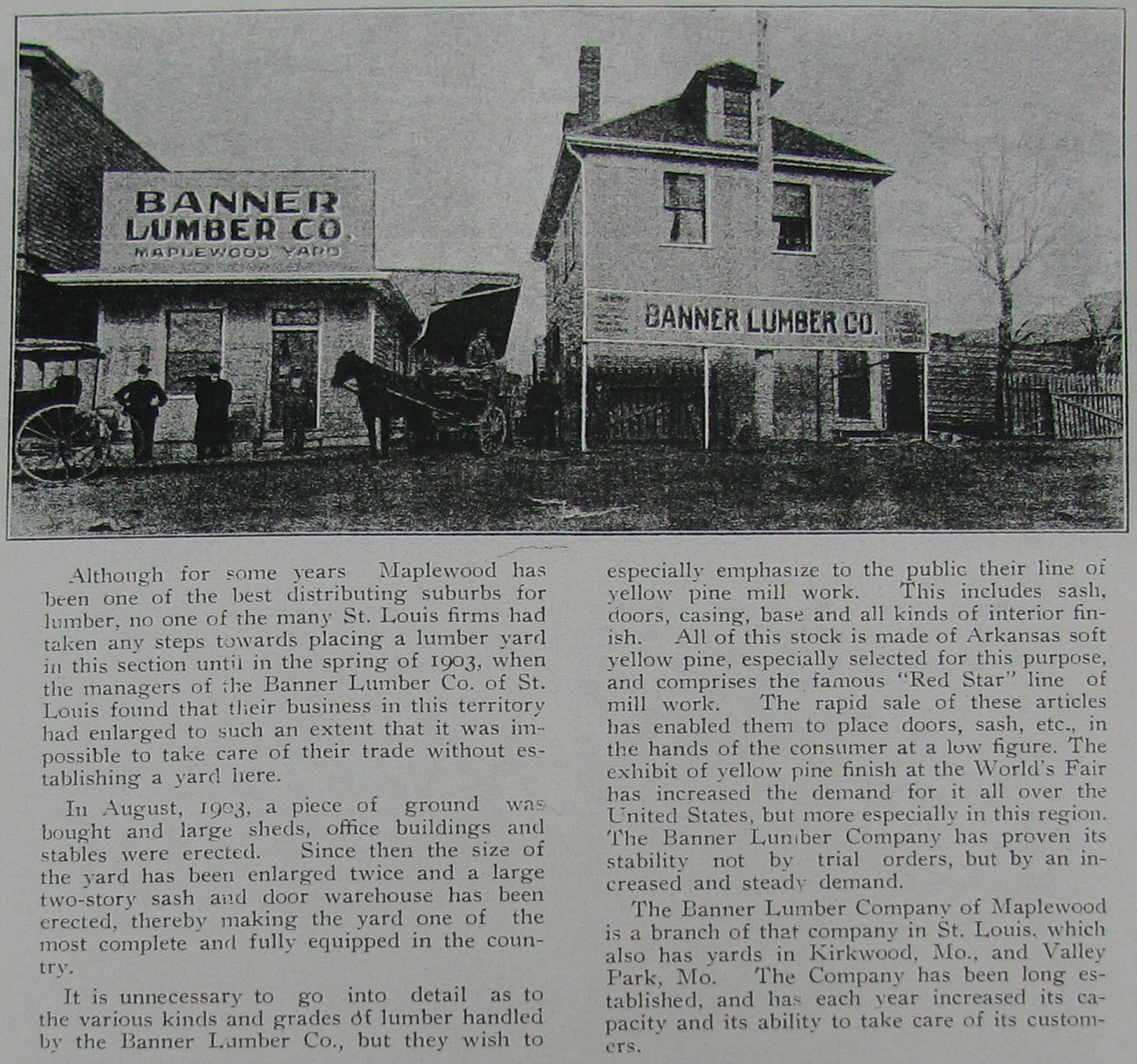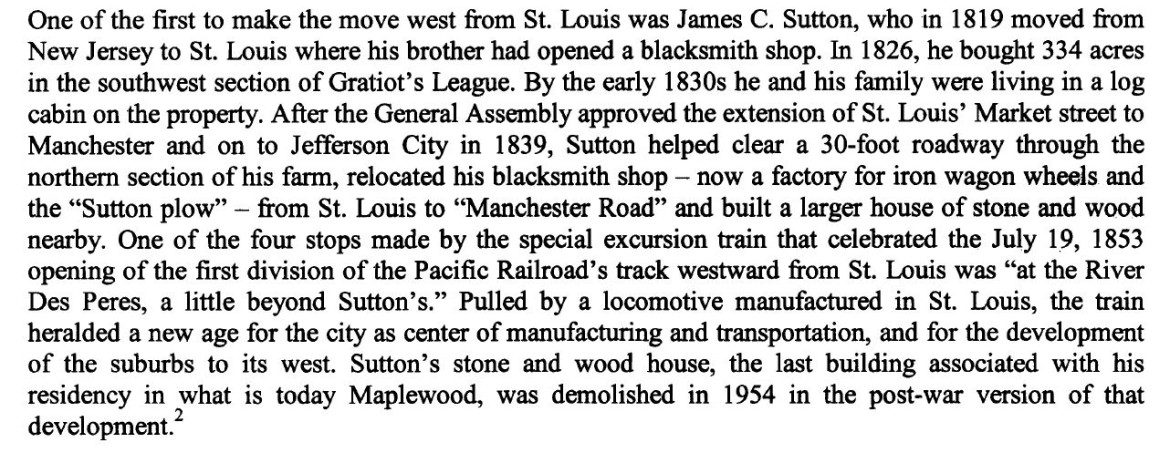James Sutton departed this realm in 1877. A short time later his heirs had begun the inevitable subdividing and selling off of the family farm. By 1900 a nice, little community was forming just east of what was once Sutton’s blacksmith shop and iron mongery located at Big Bend and Manchester.
As Joyce Cheney writes in, “the First one hundred years, Maplewood, MO”, (someday soon I’m going to stop explaining that the title of the book is a product of creative capitalization), anyhow Joyce writes, “…the Maplewood subdivision had a railway station, a post office, churches, banks, businesses and homes…What it didn’t have was its own government and taxes and the services those taxes provide.” Such as a fire department.
The community was split between those residents who wanted their own services and others who wanted to continue to rely on the City of St. Louis to provide them.
In January 1908 the Banner Lumber Company burned and took nine buildings with it. That settled it. The fire did $100,000 dollars in damage mainly because it took the horse-drawn fire equipment from St. Louis so long to get to it.
By March of 1908 the pro-incorporation faction brought their petition before the St. Louis County Court. Two months later the petition was granted. The newly appointed city officials quickly formed the new fire department.
By 1910 the city had 35 fire hydrants and by 1912, a new City Hall at 2737 Sutton with the firehouse adjacent on the south side. The buildings have been beautifully restored.







I’d just like to say that I have no idea why my replies to readers comments don’t show up directly under the comment to which they refer. Some things we’re just not meant to understand.
Hi Scott Blood, I’m glad to hear from you. As you, no doubt recall, your father, Alan was kind enough to allow us to copy your vintage photos of the mill. I’ll run some of them in a post in the near future. Your family’s buildings which are, for those not familiar with them, the Saratoga building, the Mule Palace directly west and behind it, the Maplewood Mill, just south and the former Kroger store in the 1930’s that now houses The Wood restaurant. My excerpt from the map describes your business as a “Planing Mill”. It also shows a “Lumber Yard” just north. This was a different business. I believe that business to be Banner Lumber Co. It’s important to remember that the area was developing rapidly at the time. The 1915 business directory lists two lumber dealers and three planing mills. Thanks for your comment. I am interested in copying or adding to our librarys collection any historic material concerning your family’s Maplewood Planing Mill and Stair Company.
Doug
Apparently there was a less permanent building on the site of the Kroeger store. It was the first building for the family business. I am not clear on this, but my best guess is that after the mill building was finished in 1928, they took down the original building and put up the new one for Kroeger in 1935 (if my memory serves me).
Scott, thanks for your recollection. That’s interesting and adds to our knowledge of how the site developed.
Hi Gary Tash, You’re correct. James and his brother did operate a blacksmith shop downtown and I’m fairly certain at the corner of Big Bend and Manchester as well. The source of that information is either the 1911 History of St. Louis County written by his son-in-law, William Lyman Thomas or in the application to the National Register for Woodside, researched by Kris Zapalac. I’ll check those and post whichever it was. The term iron mongery might be mine. I don’t recall reading it anywhere but what else would you call a business that produced the railings and locks for the jail downtown and patented and produced a plow? The Sutton plow. I’d love to find one of those by the way.
The detail from the plat book shows the location of Maplewood Planing Mill & Stair which was started by my great grandfather and grandfather 1905, if I am not mistaken. The lumber yard was behind the company buildings at least into the 1930s. The original building (where The Wood is now) was a tar paper structure (according to my father) directly north of the new city hall is visible in the photo.
Doug, I thought Sutton had his blacksmith shop in downtown St. Louis and that it made him a fairly wealthy man.